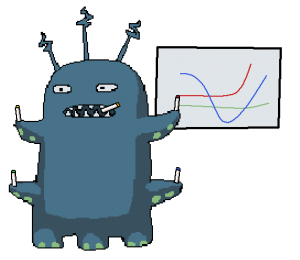
During this week our team had the opportunity to engage in discussion over many meetings. With several members in different time zones, we had to develop the best way to find an opportune moment to hold at least one online conference a week, using other additional tools such as messaging and emails as support.
We have had to overcome some resistance to learning how to use new tools and some well-known ones in a more professional way as Trello, Miro or the popular Discord.
Team composition
As I anticipated in the previous post, the idea of having published our personality tests after the groups had been consolidated was somewhat disturbing to me, this could potentially reveal important problems or flaws on our group to take into consideration. My first impulse was to compare the results, trying to identify major issues, aware that it would probably be too late to make up for shortcomings by adding a new member. At the same time, given the overwhelming amount of things that remained to be done to meet the requirements of this week minimally, it seemed unrealistic to try to focus on these caveats at least immediately. But at least we could be prepared to deal with them when the first signs of trouble showed up.
Let’s take one of the most common personality tests as a point of depart:
Although it has been consistently and strongly been criticized by some researchers (e.g., Block, 1995, McAdams, 1992), the Big Five is today the most accepted and widely used personality taxonomy. (Raja 2004)
The Big Five (also known as Five Factor) proposes that human personality can be measured along five major dimensions each of which is distinct and independent from the others.In the Big Five model, people are understood to have varying levels of key personality factors which drive our thoughts and behavior. The Big Five is a trait model of personality where the five dimensions of personality are:
- Openness: to experience, or openness to considering new ideas, describes a person’s tendency to think abstractly (not to be confused with one’s tendency to be open). Those who are high in Openness tend to be creative, adventurous, and intellectual.
- Conscientiousness: describes a person’s level of goal orientation and persistence. Those who are high in Conscientiousness are organized and determined. Those who are low in this trait are impulsive and easily sidetracked.
- Extraversion: describes a person’s inclination to seek stimulation from the outside world. Extraverts engage actively with others to earn friendship, admiration, power, status, excitement, and romance. Introverts, on the other hand, conserve their energy, and do not work as hard to earn these social rewards.
- Agreeableness: describes the extent to which a person prioritizes the needs of others over their own needs. Agreeableness experience a great deal of empathy and tend to get pleasure out of serving and taking care of others.
- Neuroticism: describes a person’s tendency to respond to stressors with negative emotions, including fear, sadness, anxiety, guilt, and shame. This trait can be thought of as an alarm system. Fear is a response to danger, guilt a response to having done something wrong. High Neuroticism scorers are more likely to react to a situation with strong negative emotions. Low Neuroticism scorers are more likely to brush off their misfortune and move on.
Not being an expert analyzing these studies, much less a scholar in psychology, my first precaution is to take note of the extreme values towards one side or the other.
All these questionnaires are based on people’s self report of what they are like. It is easy to see how they could be affected by people’s mood on the day of taking the test, the way they want to appear, their imperfect self-knowledge, and all kinds of other factors that would render this kind of data unfit to speak of anything but itself. So is there any evidence that scores on these five dimensions are of any use in understanding people’s behaviour over the long term?. In fact there is. People’s scores are really rather stable over long periods of time. (Nettle 2007 : 30-31)
As we can see, not everybody in our group used the same kind of test, but we can find some similitudes among all of them to extrapolate some ideas.
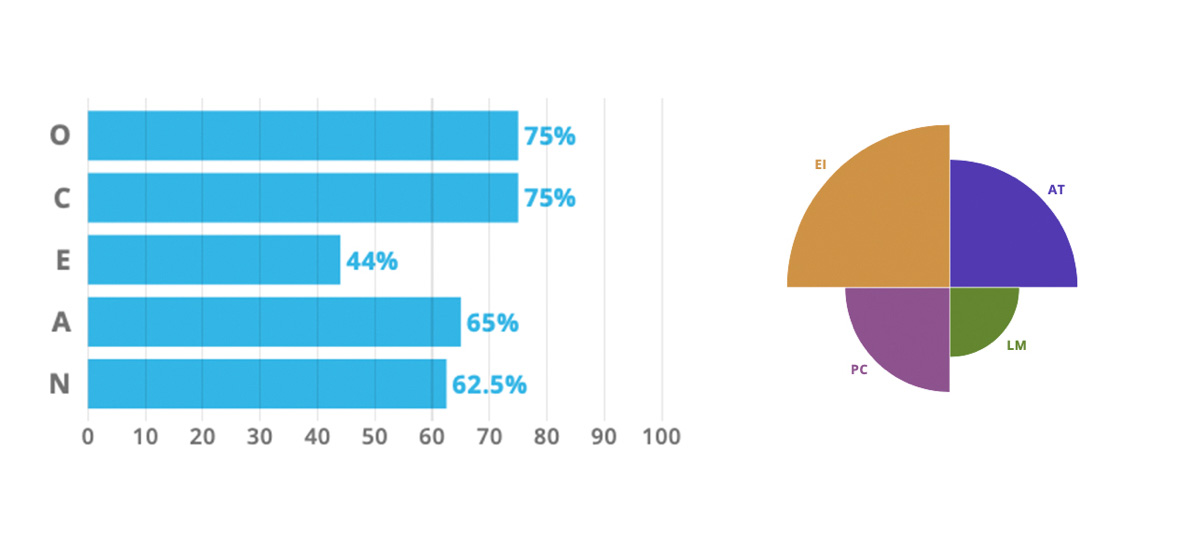
Typical team sizes and their pros and cons comparison table
| 1 team member | 2 to 5 team members | 6 - 20 team members | 20 + team members |
|---|---|---|---|
| Low cost | Relatively low cost | Higher costs | Highest costs and burn rate |
| High stress | Able to split workload | More specialized work distribution | Professional work distribution |
| Develop versus promote | Balance development and promotion | Several communicational activities are possible in parallel | All relevant channels and communicational activities are being worked on simultaneously |
| Multi-talent and charisma required | Work distribution | Some experience | Experience |
| Only one channel/thing at a time | Limited number of communication activities at once. |
I tend to be very cautious -one might even say incredulous- about the conclusions derived from these types of personality tests, especially when they are not evaluated or conducted by a professional but by a series of algorithms my first reaction is to take these results ‘with a grain of salt’. After digging a little deeper into various sources about this popular test, I have found many opinions in favor but not a few against, which reinforces my point of view.
A Big Five personality test may inform your career, but only if you are firmly in control of the interpretation and application of the results. If you leave too much to those who claim expertise in that testing – and don’t look under their rug – you may be inadvertently harming your chances, and limiting your opportunities. (Arthur 2020)
Rapid ideation plan & sustainability (Part 1)
As we knew from the previous block (GDD 710) this module is all about the experience of working in distributed teams to build an artefact that considers one of the following themes as the conceptual axis of development:
- Accessibility
- Automation
- Machine Learning / AI
- Immersive Technology (e.g VR and AR)
- Sustainability
- Location
By unanimous decision, we decided to embrace the concept of sustainability because it was the one that resonated the most among our concerns and the one that offered a broader range when generating ideas that would fit with this theme.
The basic idea of sustainability is quite straightforward: a sustainable system is one which survives or persists. But there are three additional complicating questions: What system or subsystems or characteristics of systems persist?. For how long? When do we assess whether the system or subsystem or characteristic has persisted?. (Costanza 1995)
All these questions can be answered by a quick analysis of most of the video games that come to mind, and therefore it is an excellent starting point to generate new ideas based on such questions, or rather, trying to satisfy those interrogations.
An truly inspiring starting point, and, as you will see, many of the ideas that emerged from the subsequent brainstorming sessions essentially respond to these concerns.
Team skill matrix
We count with an excellent pool of dexterities on our team:
Patricio: workarounder, generalist with skills on 2D / 3D animation, coding, development. One commercial game published so far. Looking to improve on project management, english communication, remote working.
Sarah: skills are in illustration, photography, design, creative writing, some marketing and spine animation. Looking to improve on 3D animation, project management and teamwork practices.
Debbie: writing and illustrating for children’s books, game art and backgrounds. Looking to learn how to build a game prototype and learn more about animation.
Phill: skills are in marketing, analytics, business operations, development and some coding. Looking to improve on animation and user interface design.
Will: game art, pixel art and animation skills, coding.
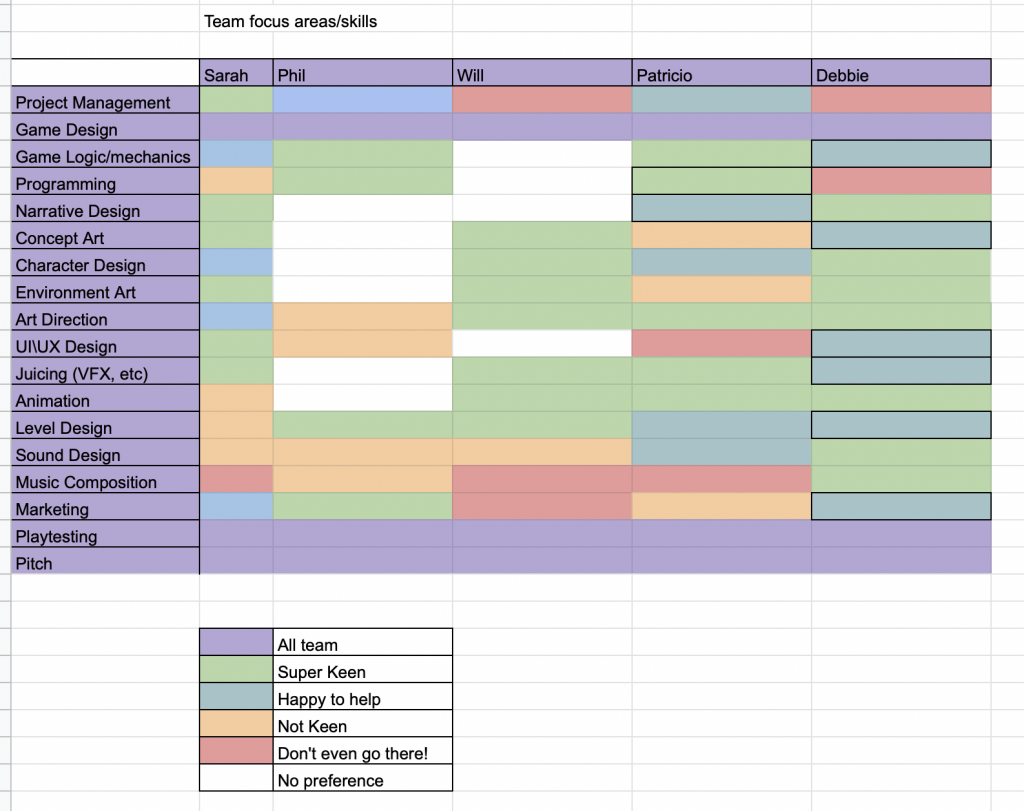
In the same way that many of these roles will be split among team members in different ways, the amount of time and energy required by each will vary over the design process. For example, the art direction and programming may not really begin to happen until the concept is gelled on some projects, while on others, things begin with art or code. It is also likely that roles will shift over the course of the project. At first, the project management may be handled by the art team, but later, once the game design is understood, project management may shift to the game designer when the project gets to core game prototyping. Being aware of the shifting demands on different aspects of the design process is an important part of keeping a team productive. At times, this can mean the team needs to make changes to the overall schedule to accommodate other responsibilities and needs. (Macklin 2016 : 267-268)
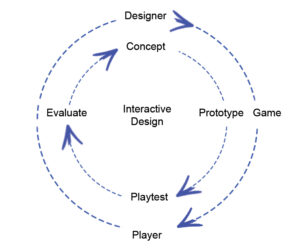
File Storage / Version Control
As we did in the previous study block we are using a GitHub repository with a Branching Framework. With the help of Phil we setup a Main branch (instead of a master), being this Main branch the published one. The Develop branch is where active development is held, also available for play-testing purposes.
Nearly all nontrivial projects need more than one developer and/or take more than a week of work. On such projects, you will need to compare historical versions of the same file to determine when (and/or by whom) changes were introduced. You will need to control and manage source changes.When there are multiple developers, those developers will make changes in parallel, possibly to different parts of the same file at the same time. You need tools to automate checkout/versioning of file and, in some cases, merging of concurrent edits. (Sutter 2010)
To better understand this methodology keep in mind that this workflow uses two branches to record the history of the project. The main branch stores the official release history, and the develop branch serves as an integration branch for features.
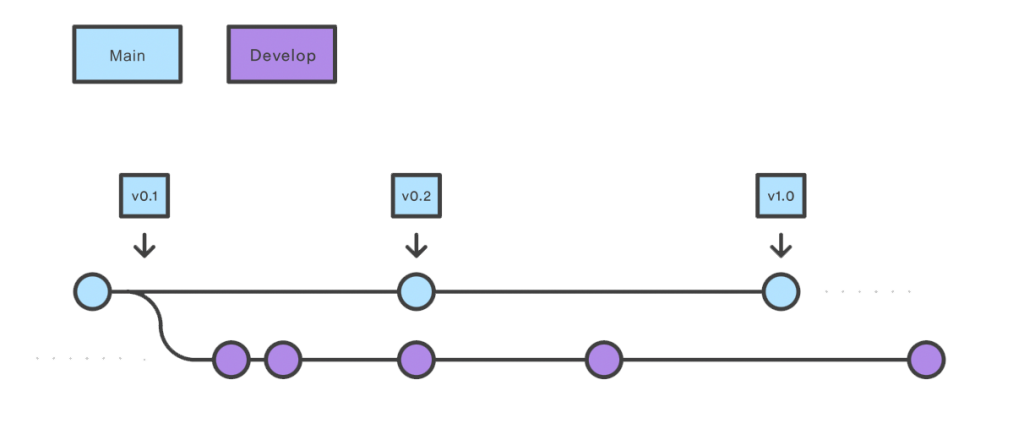
This branch will contain the complete history of the project, whereas main will contain an abridged version. Other developers should now clone the central repository and create a tracking branch for develop.
Each new feature should reside in its own branch, which can be pushed to the central repository for backup/collaboration. But, instead of branching off of main, feature branches use develop as their parent branch. When a feature is complete, it gets merged back into the develop. Features should never interact directly with main. Feature branches are generally created off to the latest develop branch. Assets such as sprites and sound may be best to put straight into the develop branch, and then pulled into the feature branch that’s integrating them.
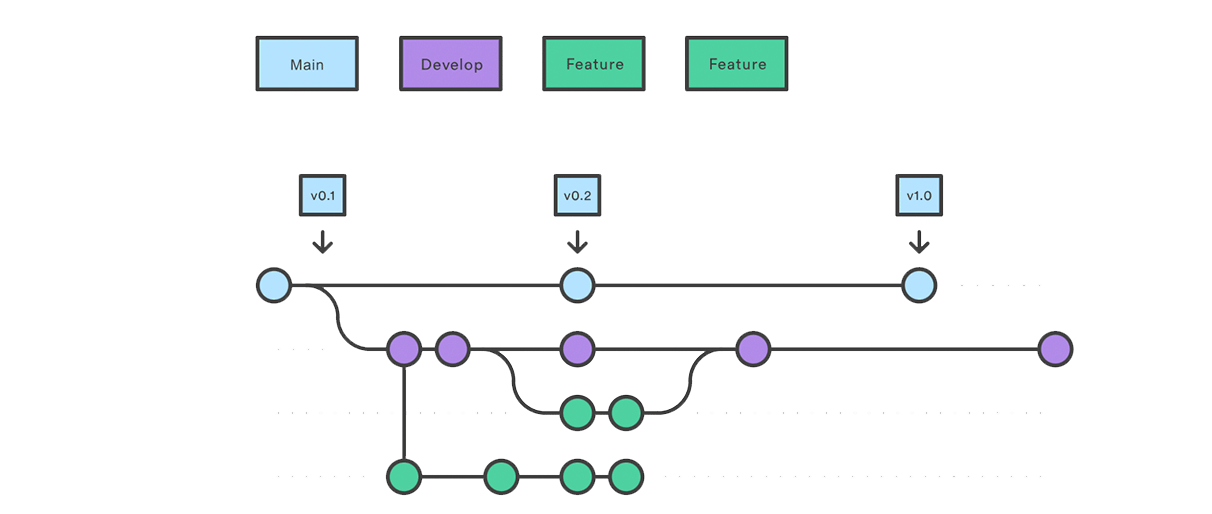
For additional information about this procedure I suggest to read the following documentation for more details.
Agile methodologies
Due to the way the groups were put together, three of our team members have far more experience than Debbie and me. However, this was not a problem when it came to agreeing on which kind of ideation techniques adopt to jump in our project:
- Brainstorming / Brain dump
- Six Thinking Hats
- Opposite thinking
- SCAMPER
- Sketching
Additionally we agreed on the use a Kanban Board using the Trello website integrated with a Discord channel
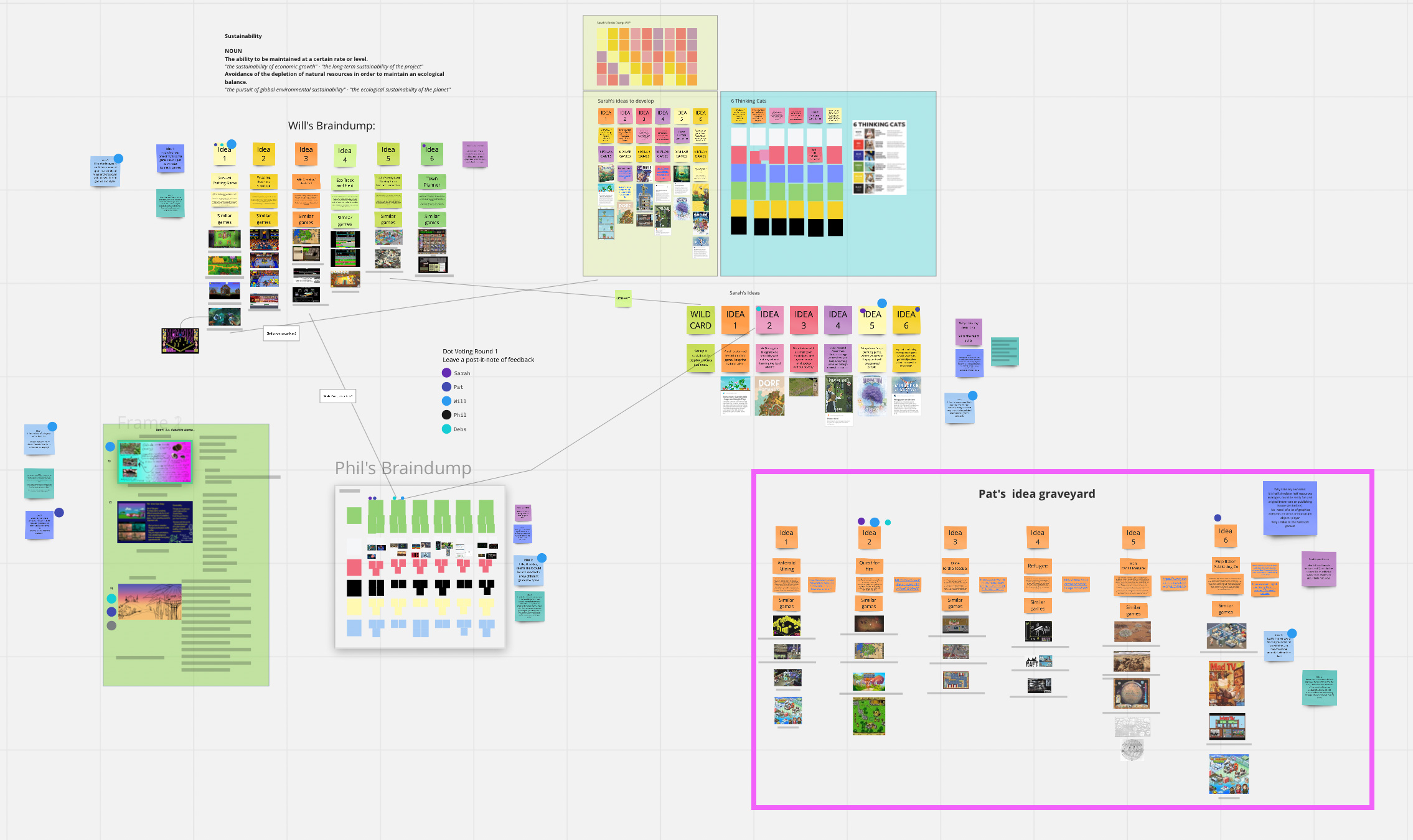
Communication strategy and Collaborative tools
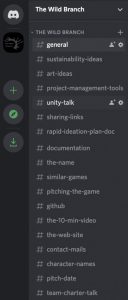
From the beginning, we knew that the team would have to face the challenge of finding a way to coordinate our time differences. Having half of the team on Europe and the other half on the United States would force us to communicate asynchronously most of the time. The strategical approach was defined as follow:
- Discord & WhatsApp for discussion
- Weekly team meetings on Wednesday at 12:00 (UK) on Discord and
/ or Microsoft Teams - Trello for task management
- GitHub Sprints for task management
- Miro for ideation, planning and note taking
- Online updated documentation (All available on shared Google Drive)
- Dedicated Web site (for promotional purposes)
While other tools were proposed on various occasions, like Jira, Slack or Spacetime, the group showed some resistance to to have to spend more time learning on how to use a new piece of software. After considering the pros and the cons, we decided to keep the current workflow as it has been proven efficient enough.
My personal contribution to the project (1): Team’s name
In addition to actively participating in the decisions described above, it was a great honor that two of my proposals for possible group names were the most accepted, finally leaving The Wild Branch as the official name!
List of figures
Fig 1 – 4. Big Five personality test for each team of The Wild Branch.
Fig 5. Iterative design process diagram based upon Walter Shewhart works.
Fig 6 – 7. Branching Framework under GitHub repository (c) Atlassian.
Fig 8. Miro Board used by the team during each brainstorming session.
Fig 9. Discord channel for The Willd Branch.
Table 1. Typical team sizes and their pros and cons comparison table.
References
Raja, U. 2004. ‘The relationship of the Big Five Personality Dimension to Personal and Organisation Outcomes: Answering the Questions Who? and When? ‘. Department of Management, Concordia University, Montreal, Quebec, Canada.
Arthur, M. 2020. [online] Available at ‘How Taking A Big Five Personality Test Can Help Or Harm Your Career‘. <https://www.forbes.com/sites/michaelbarthur/2020/02/15/how-taking-a-big-five-personality-test-can-help-or-harm-your-career/?sh=59f3f3086d5c> [Accessed 5 Jun 2021]. www.forbes.com
Nettle, D. 2007. ‘Personality What makes you the way you are‘. Oxford University Press Inc, New York.
Limpach, O. 2020. ‘The Publishing Challenge for Independent Video Game Developers – A Practical Guide‘. Taylor & Francis Group, LLC
Constanza, R. Patten, B. 1995. ‘Defining and predicting sustainability‘. International Institute for Ecological Economics, Center for Environmental and Estuarine Studies, University of Maryland. Published by Ecological Economics 15 (1995) 193-196.
Macklin C, Sharp J. 2016. ‘Games, Designs and Play A Detailed Approach To Iterative Game Design‘. Pearson Education Inc.
GitHub Workflow [online] Available at <https://www.atlassian.com/git/tutorials/comparing-workflows/gitflow-workflow>[Accessed 2 June 2021].
GitLab 2021. ‘Embracing Asynchronous Communication’. 2021. GitLab [online]. Available at: https://about.gitlab.com/company/culture/all-remote/asynchronous/ [accessed 4 Jun 2021].